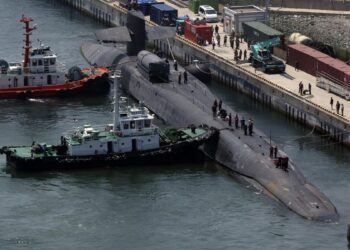As the country is wrapped around in heavy turmoil, a report about how warlords will determine a civil war has emerged. In 2001 when the Taliban had control over Kabul, it wasn’t just the US-backed Northern Alliance that contributed to the cause but also many local leaders and political groups.
These groups challenged and questioned the power of the Taliban, and now that Kabul has fallen to the Taliban yet again, people are curious if another civil war is likely with these warlords being in charge. Courtesy Scott Lucas of the University of Birmingham, we get a background to this situation. Even though it is possible for these local authorities to resist the rigid Taliban regime, according to Scott, “none of these groups has the national reach of the Taliban. And unlike 2001, none has outside support to do more than to hold on to their patch of Afghanistan.”
What is a civil war and who are these warlords?
A civil war refers to a violent conflict. This conflict takes place between two or more organized or unorganized groups within the same country/state. The last known civil war with many casualties is The Afghan Civil War (1996-2001).

The warlords on the other hand have been the spine of Afghan polity for centuries. It is dubious how easily they let the Taliban take control as there still exist, warlords, that even the Taliban fears and they pose a threat to their authority.
It was an easy task for the Taliban to take control over Kabul as the Afghan National Army surrendered but some warlords continue to show power. So far the Taliban hasn’t been able to form a government. The following is a list of influential non-Taliban warlords-
- Gulbuddin Hekmatyar- The forever survivor
- Mohamed Atta Noor- The strongman in the North
- Abdul Rashid Dostum- The Uzbek militia leader
- Abdul Khani Alipur- A Hazara overlord from Maidan Wardak
- Abdul Rasul Sayyaf- A Pashtun militant
Islamic State Khorasan

The ISIS-K, regarded as the enemy to the Taliban, shares a common ideological goal to impose Sharia. However, their interpretations of Islam differ. The Islamic State Khorasan was held responsible for the Kabul airport attacks (August 26 and 30). It has been consistently trying to gain control over Kabul and currently has 4000-5000 members.
On one side Taliban preferred complete withdrawal of troops to avoid clashes with the US and on the other side, the ISIS-K has been increasing its attacks to muster control. Their view is to show no mercy and compassion to Taliban people who refuse to join the caliphate, making them a potential ‘irritant’ to the Taliban.
Back to the Warlords
Ahmad Massoud, another strong Afghan leader and the man behind the National resistance force has been stiff while trying to counter the Taliban.
Even though reports are uncertain, despite the powerful foothold Mujahid said “Panjshir province had been fully captured and added that those who had fled could still join the Islamic Emirate of Afghanistan.” Ahmad who was controlling from Panjshir in a voice clip claimed “we welcomed the call for a ceasefire by religious scholars in Kabul but the Taliban did not agree and launched attacks on the forces”.
Atta Noor and Dostum are focusing more on politics than the military. Their plans do not seem clear. Experts say that even though a civil war is possible, to ensure peace, these warlords could have negotiations with the Taliban, or else, the increasing death toll wouldn’t stop.
In the article published by The Conversation, Scott Lucas says “If the Taliban’s grip over the daily lives of the people wobbles for these reasons, Massoud, Dostum, Khan, and Hekmatyar may well rethink their plans.”

It is true, the collapsing economy and uncertainty in the government are proof that the unorganized Taliban is not able to manage well. Will the warlords work with the Taliban or initiate a civil war? The fate remains unpredictable.
Also Read: Japanese PM Resigns Over Criticism For Covid-19 Management











